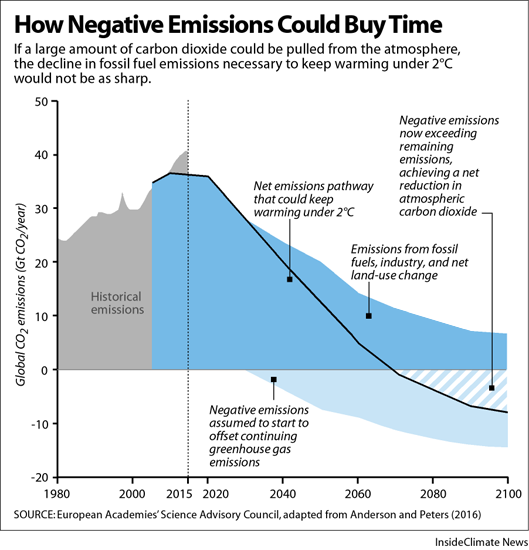SOURCE: Inside Climate News
DATE: February 6, 2018
SNIP: While technologies are being developed that can remove carbon dioxide from the air, they aren’t yet feasible on the scale needed to slow global warming, Europe’s national science academies warn in a new report.
A wide array of technologies—from land management to ocean fertilization to capturing carbon dioxide from the air and storing it—are in various stages of testing and use, but according to the European Academies’ Science Advisory Council, climate scientists and policymakers are being “seriously over-optimistic” about how much these approaches can help deal with the global warming crisis.
In recent years, climate experts have suggested that it’s not enough to just decrease the amount of greenhouse gases emitted. To avoid more than 2 degrees Celsius of global warming this century, they say, net emissions will have to fall to zero within a few decades, and it’s worth considering “negative emissions”—steps that subtract pollution from the atmosphere to offset what is being added.
But despite the appeal of that notion, which in theory allows the world to overshoot its emissions budget for a while and make up the difference later, the new report warns against banking on it.
“These technologies offer only limited realistic potential to remove carbon from the atmosphere, and not at the scale envisaged in some climate scenarios,” wrote the report’s authors, a group of experts representing the national science academies of the European Union member states, Norway and Switzerland.
That’s troubling, because most of the pathways laid out by the UN’s Intergovernmental Panel on Climate Change (IPCC) rely on deploying negative emissions approaches by the middle of this century.

